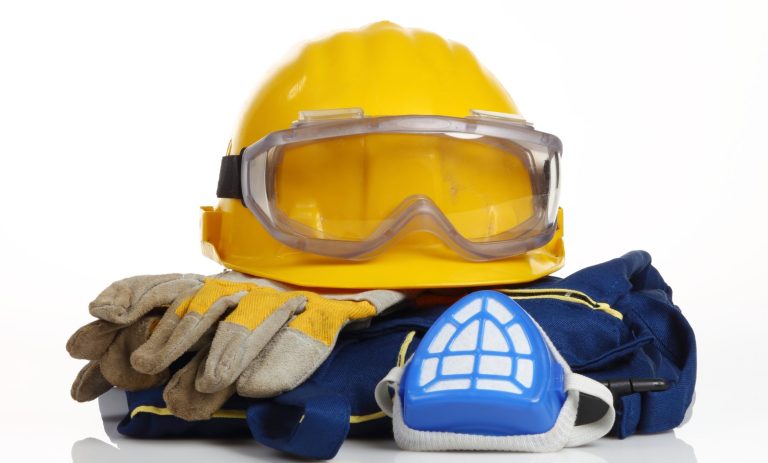Next Topic
Select SDGs to find out how we are taking action in support of the UN Substinable Development Goals
2023 ISRAEL CHEMICALS LTD. | ALL RIGHTS RESERVED

ICL complies with strict occupational safety and health standards and has implemented a new safety and environment management system that provides the framework and structure to drive excellence. ICL’s EHS&S policy and procedures create a common language across the Company.
ICL has adopted occupational health and safety management systems beyond regulatory requirements at 81% of its production sites. These EHS management systems are either ISO 45001/ISO14001 certified or equivalent management systems. The certified sites include approximately 98% of the ICL’s production sites’ workforce, and 85% of its total global workforce (based on data used in GRI disclosure 102-8). Locations that do not have industrial production processes, such as office buildings, do not have safety management systems beyond what is required by law. This affects approximately 14% of ICL’s employees.
Each year leading and lagging EHS targets are determined. The performance results are tracked according to each production site and are set as personal goals for executives, site managers and EHS managers.
During 2021, total working hours of ICL employees reached approximately 19.5 million. The total number of accidents decreased by 3.5% in 2021 compared to 2020. RTO (Right to Operate index) is an indicator that ICL has developed in order to measure environmental non-compliance.
Calculations of IR (Injury Rate) and SI (Severity Index) rates are conducted based on a 200,000 factor, multiplied by total lost employee workdays and absent days. The SI methodology is based on an assumption that the number of absent days correlates with the severity of the safety event.
Targets for 2022 include a 5% reduction vs 2021 in RTO, IR and SI performance.
| units | 2019 | 2020 | 2021 | |
|---|---|---|---|---|
| RTO | # | 103 | 101 | 94 |
| IR Rate - Direct employees | # | 0.5 | 0.65 | 0.73 |
| SI Rate - Direct employees | # | 22.94 | 30.63 | 22.02 |
| Accidents – Direct Employees | # | 50 | 63 | 71 |
| Accidents – Contractor Employees | # | 26 | 51 | 39 |
| Fatalities – Direct Employees | # | 0 | 0 | 0 |
| Fatalities – Contractor Employees | # | 1 | 2 | 0 |
| Total Accidents | # | 77 | 116 | 110 |
| *Severe Transportation Incidents | # | na | 0 | 0 |
* Significant incidents occurred during the transport of materials to or from ICL sites. According to SASB RT-CH-540a.2
ICL focuses on proactive leading indicators in order to create a strong safety culture and prevent EHS related events from occurring. Several crisis and emergency drills are performed annually in each site to ensure personnel preparedness. EHS external audits and other assessments are performed in accordance with EU Seveso Directive, OSHA PSM regulation, UK HSE control of major accidents and other leading frameworks.
| 2021 Planned | 2021 Actual | Actual vs Planned | |
|---|---|---|---|
| PSM Risk Assessment | 198 | 226 | 114% |
| EHS Audits | 375 | 392 | 104% |
| Job Safety Analysis (JSA) | 667 | 930 | 139% |
| Emergency drills | 267 | 636 | 238% |
| Crises drills | 55 | 66 | 120% |

ICL endorses and follows a variety of initiatives and quality management systems to improve and streamline processes and performance, as well as to reduce risks. The great majority of ICL’s production facilities are certified with ISO standards or with equivalent standards for environmental management, safety and quality. All major energy consuming sites are certified with the energy ISO standard. Food and pharma production sites are certified with GMP/Q7 or other designated standards for the food and pharma industries.
| 2019 | 2020 | 2021 | ||
|---|---|---|---|---|
| ISO 14001 or an equivalent standard for environmental management | % of production sites certified | 93% | 93% | 84% |
| OHSAS 18001/ISO45001 or an equivalent standard for safety | % of production sites certified | 91% | 91% | 81% |
| ISO 9001 or an equivalent standard for quality | % of production sites certified | 95% | 94% | 94% |
| Energy management- ISO 50001 | % of energy consumption | 84% | 90% | 90% |

